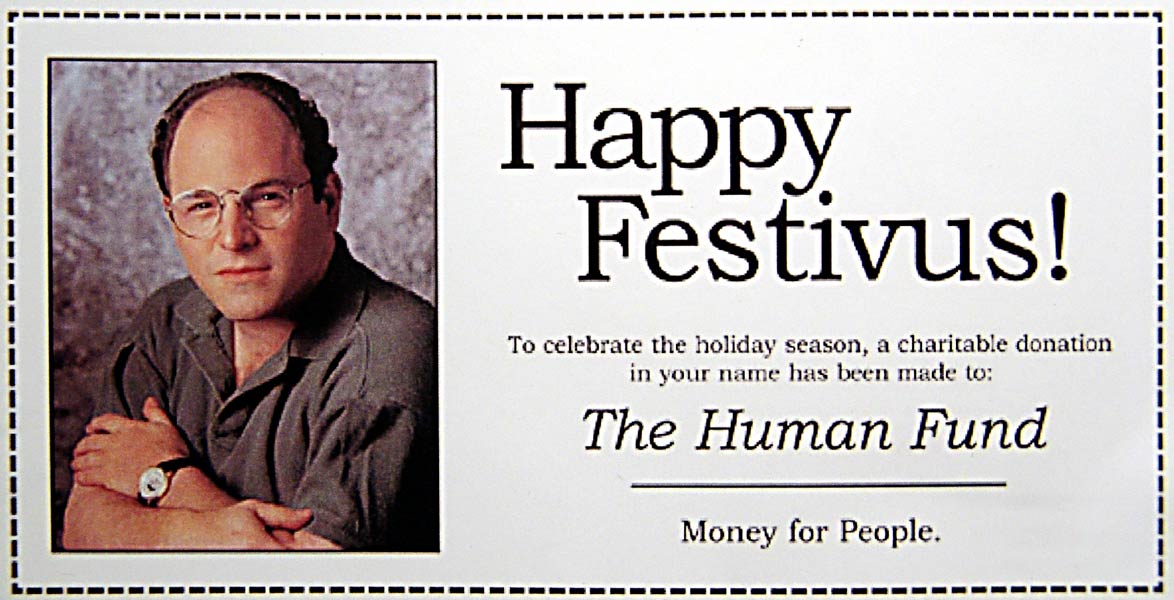A Festivus for the Peruvians

During the ninth season of Seinfeld, George goes to his parents’ house around Christmastime to celebrate a Costanza family tradition — the made-up holiday of Festivus. Festivus had a handful of traditions, such as an aluminum pole instead of a Christmas tree; Festivus miracles (because what’s a holiday without miracles?), dinner (of course), and two proper-noun events: the Feats of Strength and the Airing of Grievances.
The holiday, originally proposed by script writer Dan O’Keefe, was based on O’Keefe’s own experiences growing up, where his family had an ad hoc celebration around Christmas, as a way to relieve the tensions often associated with the Christmastime build-up. Both the Feats of Strength — a series of wrestling matches — and the Airing of Grievances aim to do just that, only in the fictional world of Jerry Seinfeld and his dysfunctional group of friends. While many people have adopted Festivus in a tongue-in-cheek way since the its first time broadcast on Seinfeld, the holiday is fake.
Except, in a sense, in a small province in Peru.
The Peruvian province of Chumbivilcas is nestled in the Andes, home to about 75,000 people. The population is rural and generally very poor; many speak the native language called Quechua, as the inhabitants of the area are still strongly linked to the culture of the Incan time period. While Christianity has taken hold in many areas, traditional customs often endured. One such custom was Takanakuy, which in Quechuan, translates to “when the blood is boiling.” On December 25th — yes, Christmas Day — residents in the area dress up in traditional costumes and take to the street, dancing. Afterward, they gather in a field and beat each other up.
Two at a time — although often, things get out of hand — people with a grudge engage in an emotional, bare-knuckled boxing match loosely refereed by a plainclothes member of the local authorities. As reported by Reuters, the fighting isn’t limited to adult men. Women and even children are allowed to step into the proverbial ring — the only limitation is that one can only square off against someone of the same gender and of similar age.
Both punching and kicking is allowed, but kicking someone when they’re on the ground is forbidden, and can result in the rule breaker finding him or herself on the wrong side of a whip. And one not need to have a grudge or rival in order to fight — many pugilists simply want to fight for the sake of fighting. It’s a cultural event, after all, not just a chance for angry people to break others’ noses. And yes, participants often come out bloodied. But it is rare to hear reports of vengeance attacks afterward, perhaps because fighters know that they can demand a rematch a year later.
Bonus Fact: In 2000, Ben and Jerry’s released an ice cream called “Festivus,” after the Seinfeld-created holiday. According to mental_floss, it was a “base of brown sugar-cinnamon ice cream with gingerbread cookie chunks and a ginger caramel swirl.” Unfortunately, you can’t buy it for your own Festivus dinner — Ben and Jerry’s discontinued the flavor and, barring a Festivus miracle, are not expected to bring it back.
Double bonus! (And not in the book!): Google “festivus” and you’ll find a Festivus pole on the left.
From the Archives: He Knows When You Are Sleeping: Krampus, the anti-Santa.
Related: Seinfeld. All of it.
